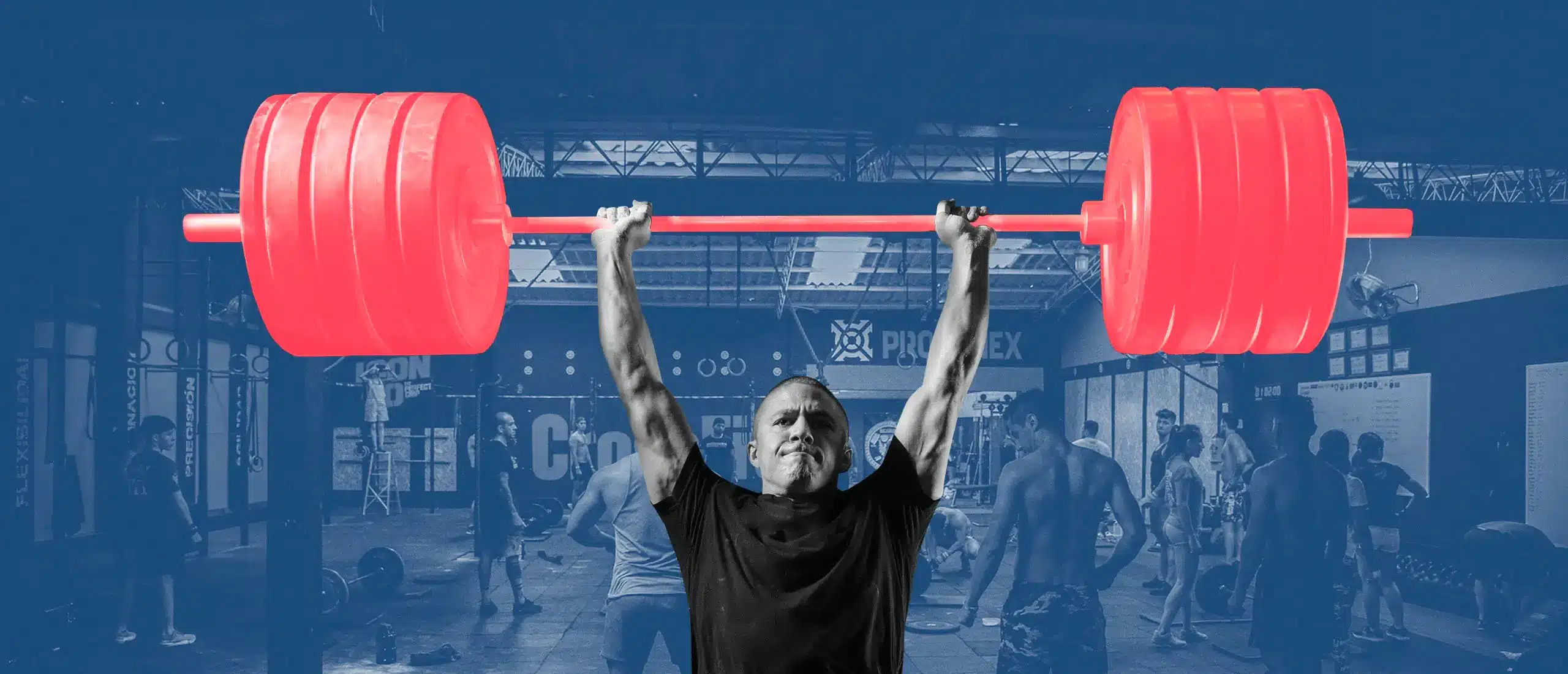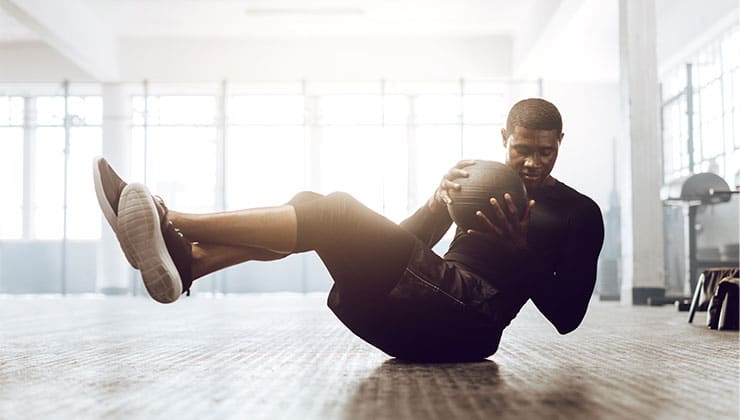How to Know When You’re Ego Lifting (Plus, 6 Ways to Avoid It)
We’ve all seen “that guy” in the gym. You know, the one who grabs the biggest dumbbells on the rack and then struggles—to your pleasure—to shake out a feeble rep or two. In between sets he grunts, looking right and left for validation (or to be sure you’re not out lifting him). He then proceeds to throw the weight around with no regard for form, rep quality, or whether or not he’s going to have working joints in the next year.
But anyone in the room with enough training experience knows he’s ego lifting. The common faux pas can derail your progress, and worst-case scenario, lead to injury. Here’s exactly what it is and how to avoid it.
What Is Ego Lifting?
Ego lifting is when someone attempts to lift more weight than they should. Whether in the pursuit of a pump or in the spirit of one-upping your squat rack neighbor, ego lifting is more likely to end in injury than lead to your goals. Serving as king of the gym floor might be your power trip of choice, but know this: if ego lifting is involved, those days are numbered.
How to Know If You’re Ego Lifting
There are a few dead giveaways that you’re prioritizing load over form and function.
Going after heavier weights that you aren’t ready for
There will always be bros in the gym claiming to train for muscle growth, yet using a load that only allows them to squeeze out a few strained reps. Don’t be one of them.
Of course, training with heavy weights is the best way to improve strength (1). Still, you should be able to lift at least two to six reps with the ideal heavy load. Plus, the sweet spot for muscular hypertrophy (growth) is a medium rep range of six to 12 repetitions, so don’t be afraid to go down in weight and do higher reps.
Bad form
Racing through reps, swinging your body to build momentum, and jerking the weight around are telltale signs of ego lifting. There’s a time and place to go ham, especially if you’re looking to build power; but, if your goal is to build functional strength and stay healthy for years of workouts to come, good technique should be your number one priority.
Partial or excessive range of motion
If you can’t complete total reps, you’re likely lifting too heavy. A full range of motion is necessary to achieve an adequate stimulus on your target muscles. In other words, if your range of motion is short you’re leaving gains on the table.
Conversely, an excessive range of motion is also a sign you might be lifting with your ego. For example, when you squat so deep your back begins to round (also known as butt wink) you move past the point of highest activation on target muscles, and shift the work to other muscle groups. This might allow you to lift heavier loads, but it reduces the stimulus to targeted muscles and significantly increases your risk of injury.
Training through pain
Whoever said ‘no pain, no gain’ should have been more specific. If a lift results in a typical burning sensation within the muscle, occasionally followed by a bout of DOMS (delayed onset muscle soreness) a day or two post-workout, you’re likely lifting within an optimal range to achieve muscle growth. However, if a particular load results in a dull throb, a sharp shooting pain, or a grinding sensation, it’s a sign to slow down. Reduce the load, try a lower-impact exercise, or opt for total rest if needed.

Want exclusive content? Our digests do that.
The best science-backed, expert-driven health and lifestyle content delivered to your inbox, weekly.
How to Avoid Ego Lifting
If you’re looking to clean up your routine, here’s how to steer clear of being an ego lifter and refocus your lifting sessions to reach your goals.
Master good technique
When you first jump into a strength program, it’s common to brush past learning proper technique for the fun stuff. It’s never too late to learn how to do it right.
Drop the macho facade, and take pride in how you move. By perfecting your form on a few foundational movements like chest presses, squats, deadlifts, and pull-ups you’ll build strength, muscle, and functional movement patterns that transfer to dozens of other exercises.
Use external feedback
External feedback is simply using an objective method to gauge the quality of your form. For example:
- Squatting to a box, bench, or chair to gauge depth
- Gently tapping your chest with the bar on a bench press
- Touching your chest to the ground during a pushup
- Letting your arms and back fully extend and relax at the bottom of a pullup
- Placing (or imagining) a glass of water on your back during shoulder taps
- Considering using a personal trainer
These external cues help ensure every rep is the same and there’s no room for cheating yourself out of good depth or control.
Slow down the tempo
Slowing things down will give you time to focus on form; plus, you’ll increase the time your muscles are under tension (which can help pack on muscle size).
To do it, slow down the eccentric (or lowering) phase of each exercise. Eccentric contractions take less energy (2) than their concentric (or lifting) counterparts but increase your overall strength faster (3). Try taking at least two to four seconds to complete the eccentric phase of each exercise during your workout—it’ll quickly humble you.
Hone’s testosterone assessment is the simplest way to uncover whether your levels are low. It’s fast, simple, and you can do it from home. And if low T is the problem, Hone can help you get you back on top of your game.
Train unilaterally
Unilateral (or single-arm/single-leg) exercises train your body as you typically use it in real life: one limb at a time. Walking, sweeping, stirring a pot, throwing a ball—all of these are unilateral movements.
For some reason, people don’t seem to get as caught up in the numbers with unilateral exercises, perhaps in part because they’re harder to cheat. They’re also more skill-based. It’s much harder to nail a Bulgarian split squat or a single-leg deadlift than a back squat. Plus, by training both sides with equal weight you’ll correct any muscle imbalances that might lead to favoring your stronger side during more major lifts.
Use higher rep ranges
Don’t be afraid to aim higher when it comes to reps. The eight to 12-rep range is considered the sweet spot for muscle growth. Plus, it’s way harder to cheat the weight when you have more reps to get through. If you are lifting for strength and training heavier sets (at two to six reps) throughout the week, balancing it out with higher rep sets with medium weight can help reinforce good technique while putting less stress on the joints.
Be patient
Muscle growth is a marathon, not a sprint. It takes months, and years of consistency to build muscle; yet, it’s impossible to build muscle if you’re constantly injured. If you really want to rule the gym floor and reach your fitness goals, leave your ego at the door.
The Bottom Line
There’s a fine line between lifting heavy and ego lifting. Lifting too heavy, with poor form, or through pain are all indicators your ego might be pushing you too far. If so, pull back and focus on proper form, slow down your tempo, increase your volume, or try unilateral skill-based exercises to silence your ego and get back to gains.
References
1.Suchomel, T. et al (2018). The Importance of Muscular Strength: Training Considerations. https://pubmed.ncbi.nlm.nih.gov/29372481/
2. Julian, V. et al (2018). Eccentric Training Improves Body Composition by Inducing Mechanical and Metabolic Adaptations: A Promising Approach for Overweight and Obese Individuals. https://www.ncbi.nlm.nih.gov/pmc/articles/PMC6090036/
3. Sato, S. et al (2022) Comparison between concentric-only, eccentric-only, and concentric-eccentric resistance training of the elbow flexors for their effects on muscle strength and hypertrophy. https://pubmed.ncbi.nlm.nih.gov/36107233/













